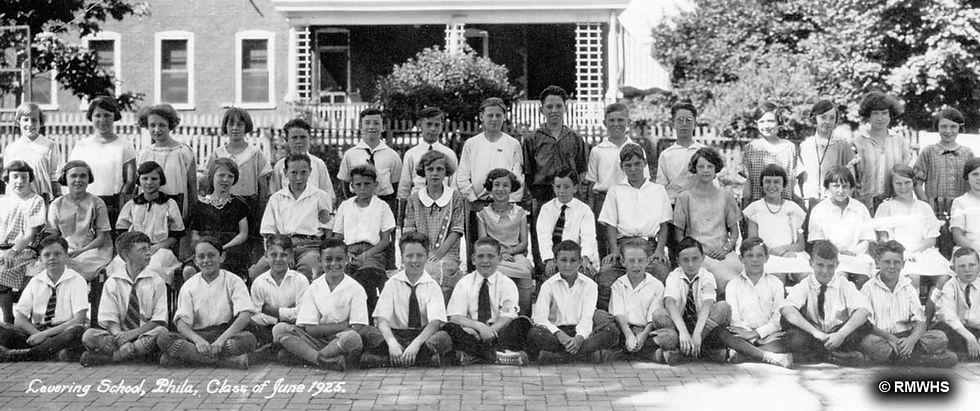Memorial Day 2022: Remembering the Words of John A. Logan
- Georgie Gould
- May 25, 2022
- 4 min read
The History
Throughout human history soldiers who sacrificed their lives to protect their kingdoms and countries have been honored according to the customs of their people. In the early days of the United States, families, churches, and communities who honored soldiers lost in battle did so according to their own timetable and largely without coordination with others. But in 1868, John A. Logan changed that -- at least for the northern states.

Logan, having served as a U.S. Congressman and a soldier in the Civil War, felt there was a need for a shared day of observance, "for the purpose among other things 'of preserving and strengthening those kind and fraternal feelings which have bound together the soldiers, sailors, and marines who united to suppress the late rebellion.'" And on May 5, 1868, while serving as Commander-in-Chief of the Grand Army of the Republic (a Union veterans’ organization), Logan issued General Order No. 11. which designated May 30 to be the day set aside as the official day of observance -- which became known as "Decoration Day." Southern states did not participate in the holiday and instead they kept to their own varied observances as each state had established it.
It was not until after WWI that the May 30th observation for fallen soldiers became a day to honor all United States military persons who died in all wars in which the country had been involved. At this point, the observance of May 30 became widely (but unofficially) known as "Memorial Day." This observance took hold in the South alongside their previously existing state observed holidays for soldiers of the Confederacy.
It was not until 1967, when President Johnson signed legislation renaming Decoration Day to Memorial Day that the name became official. Then with the passing of the 1968 Uniform Monday Holiday Act, the official day for observance was set to be the last Monday in the Month of May beginning in 1971.
The Spirit & Purpose
The spirit and purpose of this holiday is felt deeply by those who have served and their families. I do not feel I can craft original words to better convey the need to honor those who died in defense of this country than John A. Logan has, so I will not try.
General Order No. 11, Washington, DC, May 5, 1868

i. The 30th day of May, 1868, is designated for the purpose of strewing with flowers or otherwise decorating the graves of comrades who died in defense of their country during the late rebellion, and whose bodies now lie in almost every city, village, and hamlet church-yard in the land. In this observance no form of ceremony is prescribed, but posts and comrades will in their own way arrange such fitting services and testimonials of respect as circumstances may permit.
We are organized, comrades, as our regulations tell us, for the purpose among other things, “of preserving and strengthening those kind and fraternal feelings which have bound together the soldiers, sailors, and marines who united to suppress the late rebellion.” What can aid more to assure this result than cherishing tenderly the memory of our heroic dead, who made their breasts a barricade between our country and its foes? Their soldier lives were the reveille of freedom to a race in chains, and their deaths the tattoo of rebellious tyranny in arms. We should guard their graves with sacred vigilance. All that the consecrated wealth and taste of the nation can add to their adornment and security is but a fitting tribute to the memory of her slain defenders. Let no wanton foot tread rudely on such hallowed grounds. Let pleasant paths invite the coming and going of reverent visitors and fond mourners. Let no vandalism of avarice or neglect, no ravages of time testify to the present or to the coming generations that we have forgotten as a people the cost of a free and undivided republic.
Let us, then, at the time appointed gather around their sacred remains and garland the passionless mounds above them with the choicest flowers of spring-time; let us raise above them the dear old flag they saved from dishonor; let us in this solemn presence renew our pledges to aid and assist those whom they have left among us a sacred charge upon a nation’s gratitude, the soldier’s and sailor’s widow and orphan.
ii. It is the purpose of the Commander-in-Chief to inaugurate this observance with the hope that it will be kept up from year to year, while a survivor of the war remains to honor the memory of his departed comrades. He earnestly desires the public press to lend its friendly aid in bringing to the notice of comrades in all parts of the country in time for simultaneous compliance there with.
iii. Department commanders will use efforts to make this order effective.
By order of JOHN A. LOGAN, Commander-in-Chief N.P. CHIPMAN, Adjutant General Official: WM. T. COLLINS, A.A.G.
The John A. Logan Museum

The General John A. Logan Museum (https://loganmuseum.org/) celebrates the lives of General John A. Logan and the almost two million men who fought to save the nation from division and to secure "freedom to a race in chains." The Museum's video series called "Caught in the Sweep of History" provides a detailed and unique account of the Civil War from the perspective of Southern Illinois (or "Egypt" as it was called). The first video in the series tells the famous story of how Congressman John A. Logan -- the son of a slave owner -- rushed into the First Battle of Bull Run (also known as the Battle of First Manassas) wearing a suit and top hat and soon became a General and a steadfast abolitionist.
RMWHS thanks the men and women who serve -- and have served -- to protect and defend the United States.



Comments